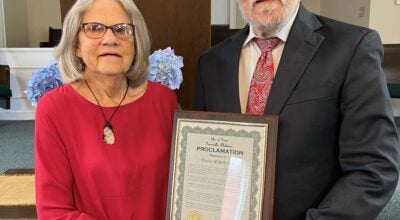BOE decides against hubs for students
Published 6:55 pm Friday, December 11, 2009
Following a tense special called meeting of the Butler County Board of Education Thursday night, it appears at least one bus driver and route will be eliminated in the school system’s Transportation Department. The move is part of an effort to make a dent in the department’s $250,000 deficit.
Many bus drivers attended the meeting after learning last month the board was considering eliminating up to seven routes and drivers by creating a hub system for the pick-up and drop-off of students living in the county’s municipalities.
Bus driver Tommy Ryan read a prepared statement, similar to a letter sent to all the board members, voicing some of the drivers’ concerns.
“Earlier this year, five of our co-workers were laid off, and now we are being asked to make further sacrifices in our department. Our concern is not only for our own jobs, but also, for the students and parents who will be asked to rearrange their lives,” Ryan said.
The statement expressed concerns for the safety of the children, weather issues and supervision at the hub locations.
“For all practical purposes, the Butler County School System is really one large extended family . . . we feel all should be willing to do some small part to continue our service to our communities without raising the unemployment rate,” Ryan said.
Two suggestions were made in Ryan’s statement: An across-the-board pay cut of five percent to seven percent for all employees and the elimination or reduction of extra-curricular trips, or a fee charged to each participant to cover the expenses of the trips.
Interim superintendent Joseph Dean presented the board with two options created by himself and assistant superintendent Allin Whittle to help ease the financial crunch. The first option would create a number of hubs around Greenville where students would congregate to board buses and where they would be dropped off, among them Dunbar Recreation Center, the Greenville Police Department, Butler Activity Center, the ball park across from Burger and Chaudron Streets, the corner of Second and Flowers Streets, the pavilion at the corner of Steele and Beeland Streets and the Greenville Housing Authority Pavilion.
Anywhere from as few as 31 to as many as 587 students would be assigned to the various hubs, with students walking anywhere from 200 yards to two miles to reach their destination hub. In some area, sidewalks would not be accessible.
In Georgiana, hubs would be located at the old R.L. Austin and Georgiana High School facilities. Dean said that McKenzie, which only has two buses, would not undergo any changes.
Eliminating four drivers’ salaries and benefits, along with fuel and bus wear and tear, would save $123,845.88 in the 2010-2011 year. However, it would cost $75, 776.40 to pay seven employees to supervise the hubs for two hours daily, making the actual savings come to $48,069.48. For a semester, the savings would be $51,112.94, less the cost of supervisors at $37,888.30, leaving an actual savings of $24,024.74.
The second option: Don’t utilize hubs, and eliminate two routes and drivers.
“Since we are already down one driver due to retirement, only one driver will actually be eliminated. We must screen the district first before we decide who will be eliminated . . . we have to survey our routes to make that decision,” said Dean. Option two would save $30,961.47 for a semester and $61,922.94 for the 2010-2011 year.
Dean recommended the board approve the second option.
Board members expressed a number of concerns about the hub plan, with Joe Lisenby stating he was “very disappointed” with the proposal.
“I like the idea of a hub. I just don’t like the way this was presented. I am frustrated . . . it is a big disappointment to me the personnel office could not come up with a plan we could live with,” Lisenby said. “And if we don’t do something, come next year we may be eliminating all bus routes within a two-mile radius because we won’t be able to afford it.”
Linda Hamilton, the newly elected president of the board, said while she commended Dean and Whittle for what they had accomplished in a two-week period, she agreed with Lisenby the hub plan “doesn’t make any sense.”
“A picture is worth a thousand words,” she said, referring to the PowerPoint presentation showing the areas and streets where the hubs would be located. “I know you all will look further for ways we can save money.”
“This didn’t just happen this year,” board member Johnny Lee said. “We should have seen this coming and instead of pointing fingers, we need to do what needs to be done.”
With a nay vote by board member Terry Williams, the BOE approved Option Two and the elimination of one route and driver.
Following the meeting, Dean said the board’s “lukewarm” reception of the hub plan was understandable due to the plan’s complexity.
“My job is to present a plan and I did that. Proration has had a huge impact and the presentation of this plan illustrated that,” Dean said.
He also explained that state law did not allow for across-the-board cuts of salaries during proration as suggested in Ryan’s statement.
“We need to inform the community of what we can and cannot do,” the superintendent added.
Julie Swann, UniServe director for the AEA in the county, had this suggestion: “One viable option is for each of the five board members to give up their $600 stipend for a year. That would cover two bus drivers’ salaries.”





